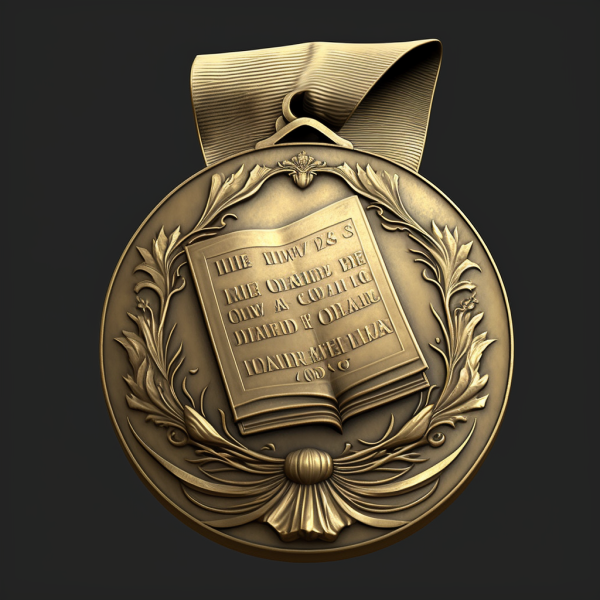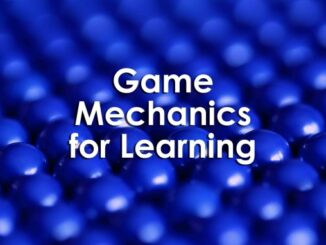
Can anything be made into a game? I have long entertained the idea that the answer to that question is probably ‘Yes’, and I have become increasingly interested in the idea that ‘real-life’, and particularly work, can be deliberately designed in a ’gameful’ way, to maximise the learning and development that we gain from just doing what we usually do anyway. Indeed, that is the guiding principle behind my Organisational Learning Change Model (OLCM).
So, with those ideas in mind, I launched and experiment in February 2023 to create and play a game, using LinkedIn as the game platform.
From a recruitment perspective this has obvious advantages, as I was able to use the game platform itself to invite participants, and I did so using a LinkedIn Poll. Many of the people who answered the poll were already 1st degree connections, but as one of the main mechanisms for running the game was the group chat facility, I then asked those who were not currently connections to connect with me, being careful to stress that disconnection is possible, and that this was not a ’fishing’ exercise.
By the time the game began, three days after the original poll was launched, 25 people were on board and had been added to a group chat, entitled simply ‘The Game’, so as not to give the game away before it started.
The idea behind the game
There were a number of intentions behind the game. The first was to act as an experiment – to see how well this subversion of a non-game platform would work, to get feedback from participants, and to act as a springboard for potential future game / learning applications.
It was also intended to be a learning game, and I spent some time deciding on appropriate learning outcomes. While this is by no means the only option, I eventually decided that an appropriate outcome for this first experiment would be for participants to learn about the platform itself. So the game was designed to introduce the different ways of posting on LinkedIn and ideas about how to garner engagement.
Using LinkedIn as the platform inevitably meant that there would be a social element to the play. The group chat meant that a group of players was convened, but even if the players had been playing singly in some way, the game was ’about’ using LinkedIn, so another outcome was networking, either through the chat, or by sharing posts, and commenting.
Finally, I decided to get players to reveal something of their own interests, which was achieved through the ‘topics’ of the game, see below, so the hope was that there would also be subsidiary learning around things that members of the group found interesting, but which others might not have come across before.
Mechanisms used in the game
The overarching mechanism of the game was a simple overlay of a narrative ‘alternate reality’. In the group chat a message was sent to all participants to start the game. It informed them that they were part of a Resistance movement, which was opposing the actions of a totalitarian organisation ‘The Council of Erudition Purge’, which was attempting to destroy all repositories of human knowledge, and that LinkedIn posts and articles were under threat.
Inspiration for this idea was taken from such real-life events as The Cultural Revolution in China, and continuing policies of supressing access to information and opinion, which happen across the world, and from one of my favourite novels ‘Farenheit 451’ by Ray Bradbury.
Farenheit 451 is available on Amazon
They were also told that they had the opportunity to find posts or articles, and to pitch for their preservation. Because the resources of the ‘Purge Resistance’ were limited however, not all items pitched could be ’saved’, so only those which got the most public approval (measured via ‘likes and comments’), would make it into the safety of the Resistance archives at the end of each ‘mission’.
At the start of the game the only facilities available to Resistance members were the group chat, referred to during the game as ‘Resistance HQ’; and the ability to comment on a ‘Mission Post’ (an ordinary post with a single image) – which you could imagine as being a kind of ‘noticeboard’ where the comments contained the pitches of the Resistance members for the articles and posts each one of them wanted to ’save’.
The initial briefing (posted at ‘HQ’) also hinted that it would be possible to gain more facilities throughout the game. This is actually the fundamental mechanism of ‘progress’ in the learning aspect of the game. In each ‘mission’ a new feature of LinkedIn will be introduced, which players will be encouraged to use to ‘improve’ how they present their pitches, or to attract more engagement.

The first ‘mission’ post asked players to go off and find posts on related to ‘Happiness’ and to pitch them in the comments. After three days the ‘mission debriefing’, containing details of the ‘saved’ posts and anything else of interest that had happened in the first mission was written up in an article, which I intended to add to, after each mission to maintain a full log of missions.
Mission Two – Coolhunting
Mission 2 asked players to go Cool Hunting. They were tasked with going of and finding articles and posts they perceived as ‘Cool’.
A very important part of the second mission post was that it introduced the idea of ‘R&D’ – and that instead of going and finding articles they wanted to save, players could dedicate their time to working towards increasing the capability of the Resistance by ‘inventing’ new ways of using LinkedIn.
This increase in capability had already happened between the first and second missions, without the need for players to do anything, and the ‘new technology’ which had been discovered was images with clickable links. The mission post itself used an image with a clickable link, and the link took players to a YouTube video page explaining how to create a post with an image with a clickable link.
The decision was made to not explicitly mention ‘R & D’ until Mission Two, so that the instructions to play the game were scaffolded in a similar way to the ‘learning content’, only introducing one or two ideas at a time.
So, in the second missions, players could find and pitch ‘cool’ content or spend their time in R&D. In order to take the R&D option, players would post information about the ‘research’ topic in the HQ group chat. In the case of the second mission, R & D were tasked with developing video capability – in other words, finding and sharing info, best practice and ‘how tos’ about using video on LinkedIn. Under game rules it was necessary that three people should do this, so that the development be successful.
Extended capability now meant that players had the choice to pitch as they had done before, using comments in the mission post, or they could use the new technology to create their own posts (complete with clickable image links),and reference those in the mission post comments. It was made clear that if they took this route then ALL engagement (on their own posts and on their comments on the mission) would go towards the adjudication of their success – a good strategy to potentially double their points for the mission.

Once this mission was completed. The mission debrief for mission two (scroll further down in the article) also introduced something new – medals. And the Resistance was able to award medals not only for successfully saving articles and posts, and for contributing to successful R&D development of video capability, but also recruitment! The fact that players would want to / be able to bring others on board after the game had started, was not something I had considered in the game design.
Mission Three – Problem solving
Having developed video capability, the second mission debrief was also delivered as suitably revolutionary address, which I link here for the sake of completeness but with some embarrassment, having made a bit of a hash of it. This, of course also meant that players were now able to deploy video posts as well.
If this had been a full-blown, fully tested, actual implementation of a learning game rather than a somewhat impulsive experiment, it would have run to around 15 missions, allowing time for R & D time to ’discover’ more types of LinkedIn posts and to explore things like searches, profile features and so on. It should be noted that I’m not a LinkedIn ‘expert’, so the intention was never to explore LinkedIn social marketing ‘strategy’ or similar, but simply technical reality.
The experiment needed to end at some point, not least so I could draw some conclusions and write this article. So, I decided to make Mission Three the last mission.
The Resistance were tasked with either pitching posts related to ’Problem Solving’, or working in R&D on Hashtags and Tagging Connections – to discover how those are best used to drive engagement.
What happened
The game was played over three rounds, and lasted just under two weeks. Those that chose to get involved, got very involved, at least over the first two missions. Of those who were not so actively involved, some were still posting messages of encouragement, or other messages pertinent to the game’s narrative, indicating that they had decided to accept the alternate reality, ’the magic circle’ of the game, but not so much as to join in with active play. Others still chose to ‘lurk’, remaining in the chat, but not messaging or taking part in the missions. Some people left the chat during the game.
Mission three was a ’failure’, in that very little activity took place. But given that Mission Two was very active, I wonder if the announcement of the imminent end of the game went some way to dissuade people from playing further. I hope that sharing this article will encourage further feedback.
Intention vs reality
From the perspective of the game designer and gamemaster (both me), some aspects of the game ran as I had expected and achieved what I wanted them to, and some did not, but that is always to be expected from a very early prototype, which this was.
I expected / wanted there to be more discussion in the ‘HQ’ regarding strategy of play, sharing of existing knowledge of ‘how LI works’ and that ‘R & D’ activity in HQ would spark these kinds of interactions.
I further expected / wanted the outcomes / learning of HQ conversations to be reflected in the way that people addressed the core loop of the game.
This was because these two things represented the core ‘learning’ aspects of the game – peer learning through curation and practice of what has been curated. If this had been designed as a set of learning activities without a game overlay, the fundamental instruction would have been ‘Find out what you can about how LinkedIn features work, share it with a group of people in chat, and then use what you have found to make posts.’
So I believe that the simple action of overlaying a narrative did serve to keep people engaged for longer with this fundamentally not especially interesting instruction.
However, there is a price to pay for overlaying narrative, and that is clarity. To a greater or lesser degree, the narrative obfuscates the simple underlying instructions, and it is certainly true that some participants reported and/or displayed confusion about what they were supposed to be doing. But then again, it is unlikely that without the narrative there would been any engagement with the activities at all – so this needs to be balanced, to achieve clarity while still maintaining the integrity of the magic circle.
Time to Play?
Many participants reported lack of time as a reason for non-participation, or participation dropping off over time. In my mind, the tasks involved were not very time consuming, and were to a certain extent just asking people to do what they were already doing – finding and commenting on posts on LI. However, that is not strictly true. I was asking them to find specific kinds of posts – which would take time. Maybe this could be mitigated, by just asking them to pitch posts they have already found (interesting) recently. This in turn, would mean that there might need to be more attention paid to the narrative for each mission to make them sufficiently different from one another to maintain interest.

It should also be recognised that ‘R & D’ is potentially more time consuming, so maybe the rewards for that should be greater. In this first prototype, Gamification did not feature heavily – beyond the awarding of medals, so that would be something to consider for version 2.
Missions lasted three days in this experiment, mainly because my feeling was that longer timescales would dilute engagement and because one of the major mechanisms was ‘engagement’ which on LI, apparently requires lots of interaction with a post in the first hour, never mind three days. Many people feedback that they would have like longer for each mission. This means that for a game of LinkedIn, in particular, I would have to think carefully about which ‘algorithmic’ aspects should have an impact and which shouldn’t, and that it would probably only be appropriate to include ‘engagement’, in terms of the viral type algorithmic ‘engine’, if a game were designed to be played and completed over an hour or two, rather than over an extended time, like this one.
Other potential barriers
Although I haven’t received explicit feedback to this effect, there is another potential barrier which has long been on my mind, which may have contributed to the falling off of activity in the game, or people not engaging at all.
Of necessity, ‘playing’ in LinkedIn, means you are playing in a public space, and not just any public space, but one where you may have created a very specific ‘professional’ persona. So there may have been a reluctance, once the reality of the game was revealed, for some people to expose themselves by joining in. I also, personally, have to face the potentially awful possibility, that, given that activity dropped off so markedly after mission two, that it was my disastrous attempt to give a competent video debriefing and /or the fact that I was wearing a revolutionary style red beret and ‘Free Ferris’ badge in said video, that some people found cringeworthy enough to disengage altogether.
Lessons Learned
A (non-exhaustive) list of reflections I will take away with me to consider possible new games in LI and other ‘non-gaming’ platforms will include:
- Complexity of instructions – how to make something ‘gameful’ without too much obfuscation?
- Time available to players – what can I expect and how can I introduce ‘play’ into actions already done – to add no time at all. Maybe in this case that could mean sharing posts they already noticed, or even promoting their own posts?
- Limitations of the platform – e.g. HQ was a great idea, but linear chronological chains of messages are hard to navigate.
- Perceptions of fairness – I bent/waived the rules because they didn’t impact the learning, but some players dislike that.
- Gamification – Rewards for play/learning, and how they can be implemented on the platform.
Do You Want to Try It?
I remain encouraged, despite a drop-off in play. For a first prototype, this game did pretty well. So, what hints do I have for somebody wanting to do the same? Indeed, maybe a more fundamental question is ‘Why would you want to do this?’
The 70:20:10 model (and indeed my own OLCM) tells us that only a fraction of learning goes on in ‘formal’ learning settings. We are learning all the time, from everything we do. If you accept this idea, then it makes sense to apply deliberate design to ‘everyday’ activities to ensure that the learning derived from them is optimised, and indeed that it has desirable learning outcomes.
If you further accept that play and games provide effective pedagogies, as well as a way to engender engagement in activities,* then gameful design is a great approach to choose.
*(you may not accept this, of course, in which case stop reading now. Bit late in the day for this warning, I know, but you’ve probably saved yourself 40secs or so).
The potential for ’non-gaming’ platforms to have ’gameful design’ applied to them is probably limited by your imagination, but here are a few general principles to get you started.
- Consider the platforms available to you and then think about them in terms of the ‘experiences’ they offer rather than the ‘tasks’ they help people to carry out. For example, LI offers the experiences of ‘gathering together’ in groups and group chat, the experience of ‘social approval’ through likes and comments, and ‘creativity’ through all the different ways you can post.
- What do you want your (learning) outcomes to be? How does a platform potentially allow ‘delivery’ of learning through e.g. peer sharing of knowledge, through activities that could be constructed from the ‘experiences’, content sharing and delivery
- Do your learners already know how to use the platform, or is there an additional learning curve. One compelling reason to widely used platforms and resources to design playful learning, is because your learners DO already know how to use them, and in fact use them all the time – e.g you could use your company email platform to run an ‘alternate reality’ game where scenarios instructions are delivered through emails – with minimal instruction, because everyone already knows how to use the email client.
- Narrative overlay is the easiest place to start. It relatively easy to make something gameful, by a simple reframe. This ’invitation to the magic circle’ can be all that is needed to make an ordinary activity into a compelling game.
Thanks to All Involved
Although I won’t mention you by name here, just in case you don’t want me too, I want to extend my heartfelt thanks to all those who were involved in this little experiment with me. I couldn’t have done it without you. You can ‘out’ yourselves in the comments on LI when I share this article, if you wish.
- James Bore – The Ransomeware Game - 13th February 2024
- Ipsodeckso – Risky Business - 23rd January 2024
- Review – Luma World Games - 15th December 2023





Be the first to comment